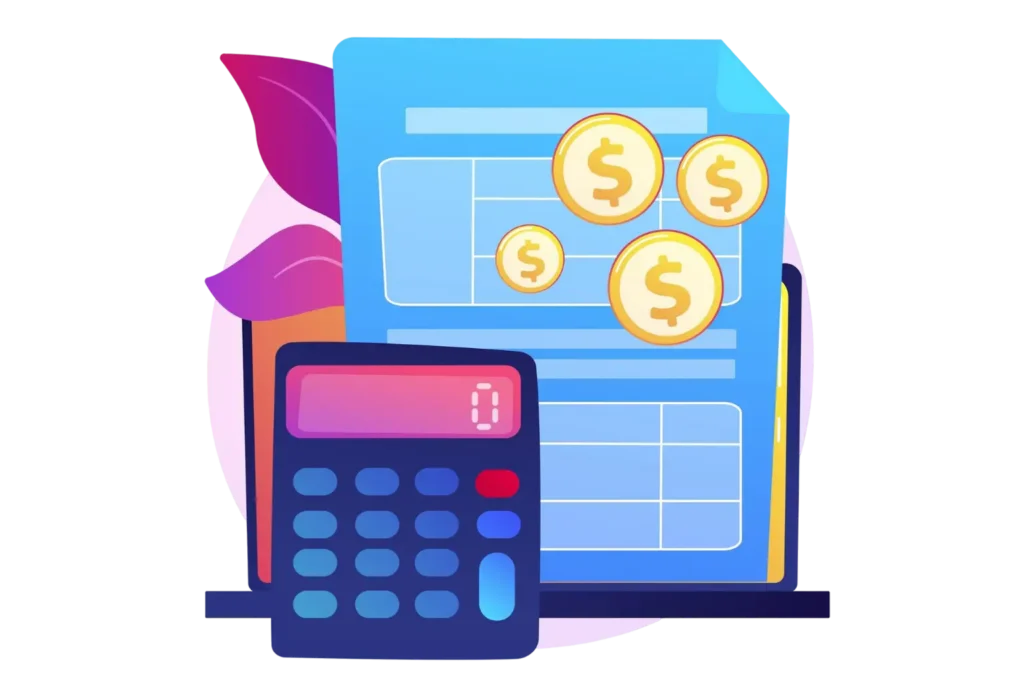
What is an Electronic Billing Software? A Comprehensive Guide
Each invoice that you print is more expensive than paper, it is time and accuracy and reputation.
That is why the top organizations are switching to electronic billing software, which replaces the old paperwork with speed, transparency, and control.
✨
Quick Read
Summary generated by AI, reviewed for accuracy.
A contract management system software streamlines how teams draft, organize, and oversee contracts from start to finish all in a centralized platform. It minimizes mistakes, improves efficiency, and simplifies the entire workflow for both legal and business departments.
This change is not simply a matter of going digital it is a matter of accuracy, efficiency and control. It is not why you should switch anymore, but when you can.
This guide describes the definition of an electronic billing system, its functionality, advantages, major characteristics, and issues to assist you in making sound business decisions.
What Is an Electronic Billing Software?
Electronic billing software is a tool that allows your business to send automated invoices of your subscription services in a fast and secure way.
It automates the whole billing process, including invoice generation and collection of payments, minimizing the use of manual effort and error.
It guarantees a steady cash flow and customer satisfaction by automating recurring billing.
Why Is It Important?
These are among the factors why many companies are moving towards an electronic billing software.
- The contemporary organizations require real-time monitoring, immediate access and simplified transactions which cannot be offered by the traditional billing.
- A billing software is an electronic tool that keeps your business financial activities in pace with business velocity and precision.
- It stores all the billing information in a central repository and removes the necessity of having physical storage or paper files.
- Establishes a clear electronic record that increases accountability and control.
- Enables businesses to stay organized and accurate without having to go through paperwork.
- Empowers teams to focus on strategy and growth instead of routine administrative tasks.
How Does the Electronic Billing Software Work?
An electronic billing software automates the whole process of invoicing by generating bills up to receiving payments by a set of simplified digital procedures.
Step 1: Invoice Creation
Based on this information, the system will automatically create the correct invoices using pre-set templates that are branded and billing format-appropriate.
Step 2: Digital Delivery
The invoices are delivered through email or a secure web portal, which customers receive immediately and get rid of the postal delays.
Step 3: Payment Processing
The customers are able to pay using integrated online gateways so that transactions can be faster and convenient.
Step 4: Tracking and Alerts
The electronic billing software tracks the status of every sent, viewed, or paid invoice and reminds about outstanding payments automatically, which is beneficial in preserving cash flow.
Step 5: Record Management
The electronic billing system has all the invoices, receipts and payment records which are easily accessible in case of audit, report or as a reference in future.
Essentially, the electronic billing system streamlines and automates all the billing processes and saves time, enhances accuracy, and facilitates smooth financial processes.
Key Feature of an effective Electronic Billing System
A good electronic billing system is not just about the production of electronic invoices. These are some of the features of importance to consider.
1. Automation
Every good billing system is based on automation. It also handles repetitive functions such as invoice preparation, payment reminders, tax calculation, and payment processing.
The system does not require user to enter data manually or go after clients to pay them.
The automated subscription billing process saves you time and money in manual labor and your billing is always on time.
2. Invoice Templates
The electronic billing software is also equipped with pre-built invoice templates that are professional and can be customized easily.
Users are able to add your business logo, change colours, and add as much information as they desire such as tax numbers, item descriptions or even payment terms.
This will assist you in designing clean branded invoices in minutes without having to design them manually. It also maintains your invoices in the same manner and your brand appears more credible and professional.
3. Custom Billing
All businesses bill in different ways and a good billing software knows that. The users can customize their invoicing options according to their your way of charging your customers.
Bill per project, bill per hour, bill per product, the software allows you to build your own invoices that suit your business model perfectly.
It allows you to manage various pricing structures without any confusion and additional setups.
4. Handles Custom Bundles
Companies are able to bundle several products into a single invoice and hence customers will have a clear picture of what they are paying.
It maintains your billing orderly and does not confuse. This allows the customers to know the total cost, and this enhances clarity and satisfaction.
It also eases accounting and reporting because all the related items are monitored in one and well-organized record.
5. Subscription Management
For businesses that depend on recurring revenue such as memberships, SaaS or digital services.
It automatically renews subscriptions, issues invoices at the right time and makes recurring payments. The system takes care of the renewal dates and the businesses do not need to remember them.
It also reduces delays in payments and makes sure that customers have access to your services without interruptions.
6. Quote to Cash Process
The electronic billing software enables companies to send quotes, receive approvals, convert them into invoices, and track payments seamlessly all from one centralized platform.
It saves time, maintains records and makes your experience and that of your customers as easy as possible.
7. Pro-forma Invoice
A pro-forma invoice is a provisional invoice that indicates to the customers what they are likely to pay before the final invoice is released.
It contributes to preventing confusion regarding the price and makes the communication more open. This is particularly helpful in those businesses that handle custom or large orders.
It fosters trust because before any transaction is made, both you and your customers are on the same track.
8. Reporting & Analytics
The businesses will be able to see reports on the total revenue, payments pending and customer payment history, and trends over time.
With the help of the analysis of these reports, users will be able to detect patterns, find delays, analyse subscription trends and improve your billing strategy to achieve higher results.
It can also assist you in predicting your future income and also which of your customers or services are most likely to make you successful in your business.
Benefits of Using Electronic Billing Software
Electronic billing software is not only digital invoicing software, but it will make your business work smarter, faster, and more efficiently. These are five major advantages that make it a necessary tool in the modern business.
- Saves Time and Effort
Under electronic billing, majority of the activities such as invoice creation, reminders and payment monitoring are automated. This leads to an improvement in productivity and makes day-to-day operations a lot easier, particularly when the billing periods are high. - Faster Payments
Invoices are delivered immediately via email or an online portal and they reach customers immediately. The faster delivery usually results in faster payments that enhance your cash flow and keep your business afloat. Clients will pay in time when they are given bills at the right time and with easy payment methods. - Better Accuracy
The chances of errors are highly minimized since the system retrieves billing information based on your accounting or sales records. Each bill is prepared with the right information, taxes and total that will save you the hassle of making corrections in future. Correct billing also enhances confidence with your customers and increases your financial credibility. - Easy Record Management
The invoices, receipts and payment histories are all digitally stored in a single secure location. Business is able to search, filter and download any record in a short time span without having to rummage through physical files. This structured system simplifies and accelerates audits, financial reviews and reporting. - Professional Image
Properly designed online billing will make your company appear well-organized and modern. Customers like open and prompt communication, which enhances their experience with your brand. Regular, smooth subscription billing process creates an unforgettable impression and better relationships with clients.
Common Businesses that Use Digital Billing Software
Almost all forms of businesses, including startups and large enterprises, now use electronic billing software. Switching to an electronic billing software can be useful to any business that issues invoices, collects payment, or handles subscriptions.
- Subscription-Based Businesses
Companies that offer subscription business model, such as SaaS products, streaming platforms, or membership programs, rely on automated billing to manage renewals and payments. - Professional Services
Electronic billing software is used by agencies, consultants, law firms and accountants to bill clients on projects, hours worked or retainers. It assists them in the preparation of transparent invoices and the monitoring of payments. This saves time as well as earning trust among the clients due to clear billing. - Retail and E-commerce
Electronic billing software is a tool that is used by ecommerce brands and retail outlets to send invoices in real-time and handle hundreds of transactions per day. It assists them to manage taxes, returns and discounts under a single platform. As the bills are faster, the customers get a more comfortable shopping experience. - Healthcare Providers
The electronic billing systems are used to handle patient bills and insurance claims in hospitals, clinics and labs to enhance the overall revenue management in healthcare. It saves employees the burden of paperwork and minimizes billing mistakes. - Educational Institutions
Electronic billing software is used in schools, colleges, and training center to handle tuition fees, course enrolments and other payments. It assists them in maintaining records of fees and minimizes the administrative pressure. Parents and students are reminded in time, and they do not miss payments. - Real Estate and Property Management
Electronic billing system are used by real estate companies and property managers to manage rent, maintenance and service charge. It simplifies and monitors monthly collections. The property owners can also see the payment history at any time, which enhances transparency. - Freelancers and Small Businesses
Small businesses and freelancers can use electronic billing software to handle their subscriptions and to issue invoices in a short time. It assists them in managing recurrent payments easily and maintain cash flow.
Also Read: Best Subscription Management Software for Small Business
Best Practices to Implement While Handling Billing
Managing billing efficiently is essential for keeping your business finances organized and ensuring smooth payment cycles. Adopting these best practices can help reduce errors, improve customer satisfaction, and strengthen your overall billing process.
1. Keep Customer Data Updated
Accurate customer information is the foundation of effective billing. Outdated or incorrect details can cause payment delays and confusion.
- Regularly review and update customer contact, address, and payment details.
- Verify information before sending invoices to avoid returns or missed payments.
- Store data securely to protect customer privacy and comply with regulations.
2. Automate Recurring Invoices
Automation helps your team save time while ensuring every recurring payment goes out on schedule. It also reduces the risk of missed or duplicate invoices.
- Use billing software to automatically send invoices for recurring payments.
- Schedule invoice dates to match your billing cycle.
- Set reminders for upcoming renewals or expiring subscriptions.
3. Set Clear Payment Terms
Clear communication builds trust and helps you get paid faster. Defining payment terms upfront makes your billing process smoother and more predictable.
- Mention due dates, payment methods, and late fees clearly on every invoice.
- Use simple, direct language so clients know exactly what to do.
- Communicate any policy changes in advance to maintain trust.
4. Track Invoices and Payments Regularly
Keeping an eye on your billing activity helps you avoid missed payments and maintain healthy cash flow. Regular tracking ensures every transaction is accounted for.
- Maintain a record of sent, paid, and pending invoices.
- Follow up politely on overdue payments to avoid revenue loss.
- Use your billing dashboard to identify slow-paying clients early.
5. Offer Multiple Payment Options
Providing flexible payment options makes it easier for customers to pay you on time. It’s a small change that can have a big impact on your cash flow and customer satisfaction.
- Accept digital payments such as credit cards, bank transfers, or wallets.
- Include quick payment links in invoices for faster transactions.
- Support regional or preferred payment methods for global clients.
6. Maintain a Consistent Billing Schedule
A predictable billing schedule helps customers know when to expect invoices and reduces confusion. It also keeps your financial operations steady and organized.
- Choose a fixed billing date and stick to it every cycle.
- Notify customers in advance about upcoming billing periods.
- Review your schedule quarterly to align with customer preferences.
7. Analyse Billing Reports for Insights
Billing data can reveal a lot about your business performance. Analysing the subscriptions helps you find improvement areas and make smarter financial decisions.
- Review revenue, payment trends, and overdue invoices monthly.
- Identify top-paying clients and recurring issues using analytics.
- Use insights to improve billing efficiency and forecast future growth.
How Revenue 365 Can Help Manage Billing Effectively?
Revenue 365, built and certified by Microsoft, seamlessly integrates with SharePoint, MS Teams, Outlook, Power BI, and Power Automate to deliver a truly connected billing experience. Designed to streamline the entire billing lifecycle, the platform leverages automation to eliminate manual errors and save valuable time.
From creating quotes and custom invoices with client logos to managing subscriptions, tracking revenue, and generating insightful reports, Revenue 365 enables businesses to handle every aspect of billing on a single unified platform.
Conclusion
When you’re ready to move beyond manual billing and adopt a solution that scales with your business growth, Revenue 365 is here to help. The platform transform your billing process with automation, accuracy, and real-time insights, bringing your operations into the digital era.
Ready to modernize your billing experience? Get in touch with Revenue 365 today to schedule a demo and discover how our electronic billing system can streamline your workflows.
Join Our Creative Community
Frequently Asked Questions
Does the Revenue 365 electronic billing software keep my data safe?
Yes. Once the Revenue 365 electronic billing software is deployed in your Microsoft 365 tenant, we do not store or retain any of your data. All information remains securely within your organization’s Microsoft environment.
What about having clients in various countries with varying tax regulations?
Yes. Revenue 365 is designed to handle multi-currency billing and flexible tax localization to support businesses operating across multiple regions. The system automatically adapts to country-specific tax rules and enables you to create customized invoice templates that meet local compliance requirements.
What is an example of electronic billing?
An example of electronic billing is when a company creates, sends, and tracks invoices digitally instead of using manual or paper-based processes. For instance, a consulting firm can generate and email invoices to clients directly from Revenue 365, with taxes automatically applied based on location
Does Revenue 365 provide role-based security?
Yes. Revenue 365 includes role-based access control, allowing administrators to define user roles and permissions. This ensures that each team member can access only the information and actions relevant to their responsibilities.
Does Revenue 365 support invoice approval workflows?
Yes. Revenue 365 offers a configurable invoice approval workflow, enabling businesses to review, validate, and approve invoices before they are sent to clients.





_JiluXJRGNl.svg)



















